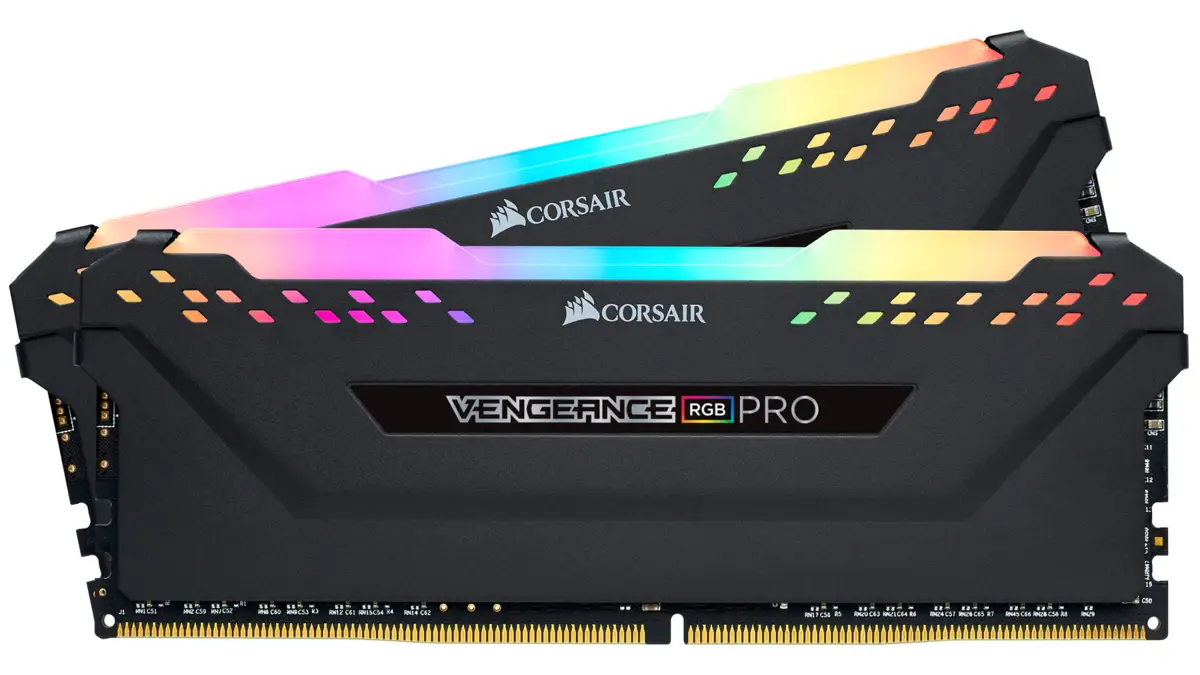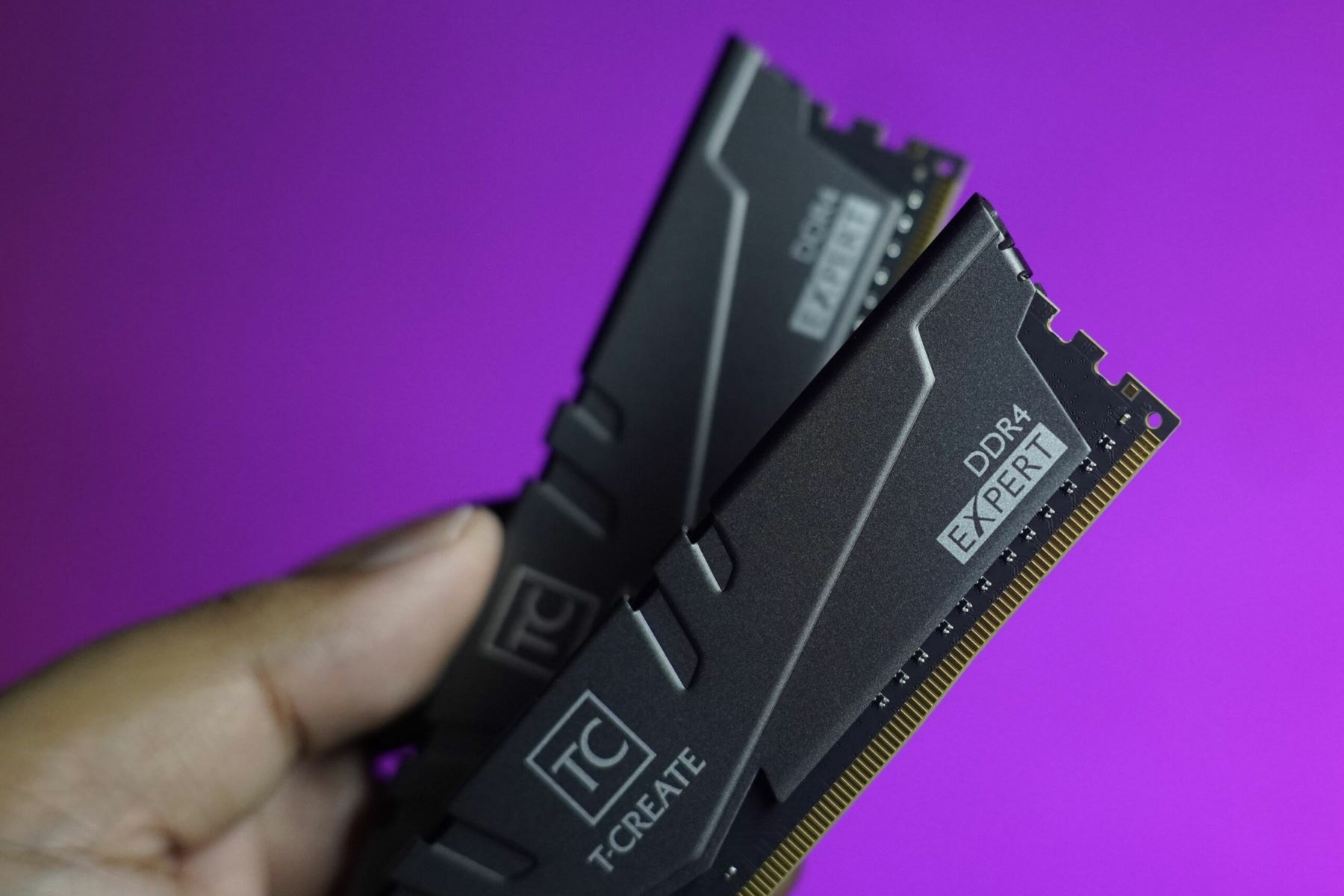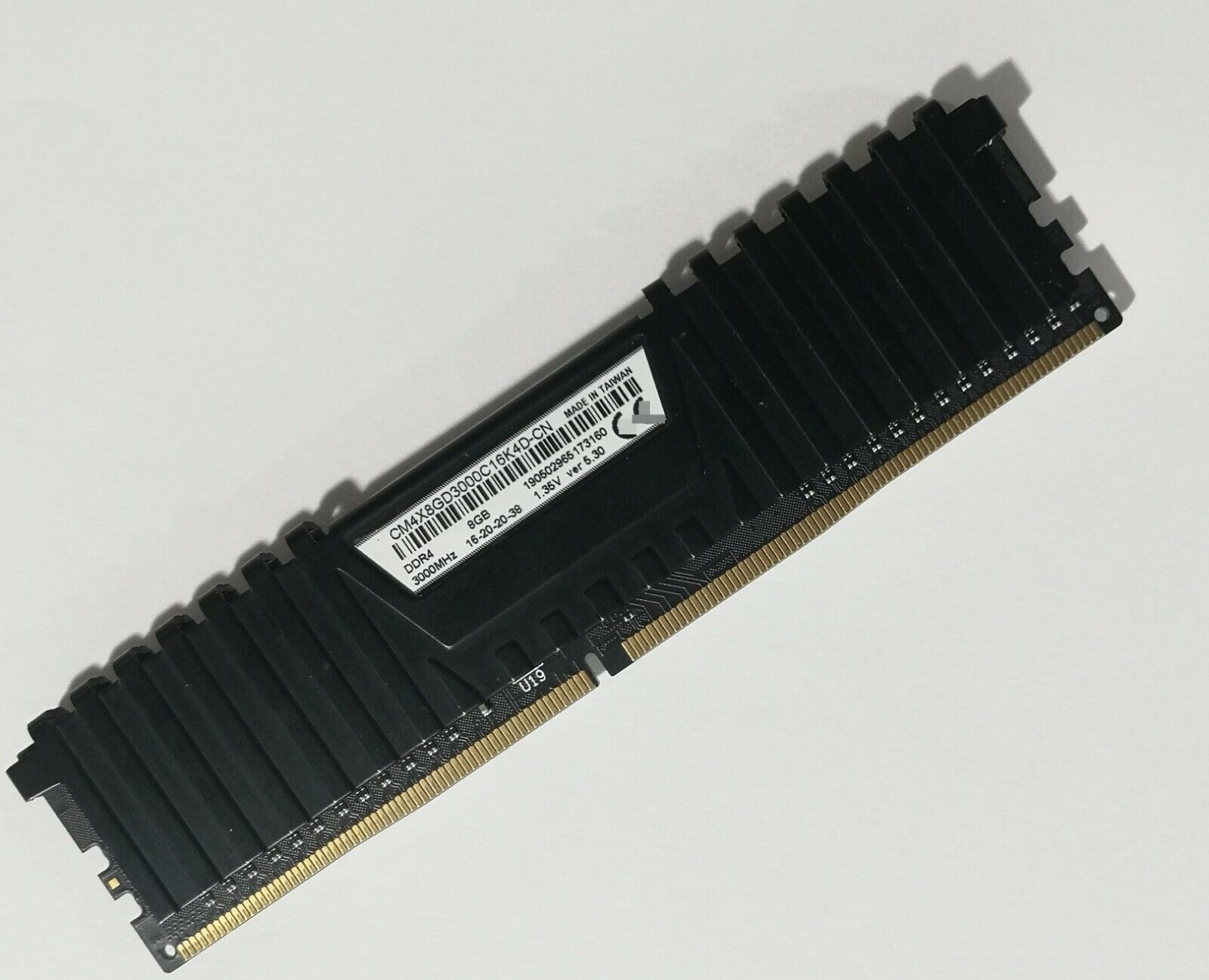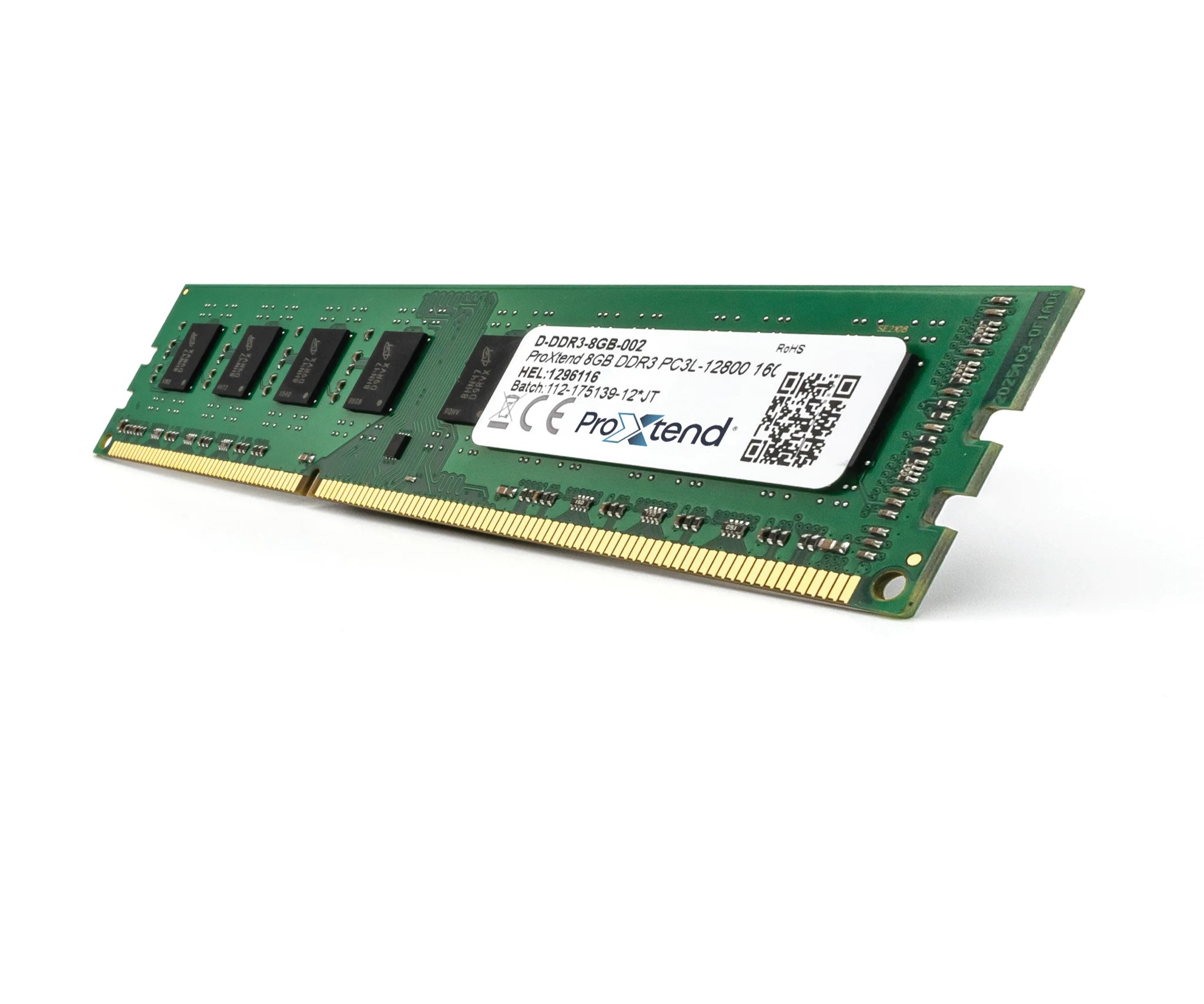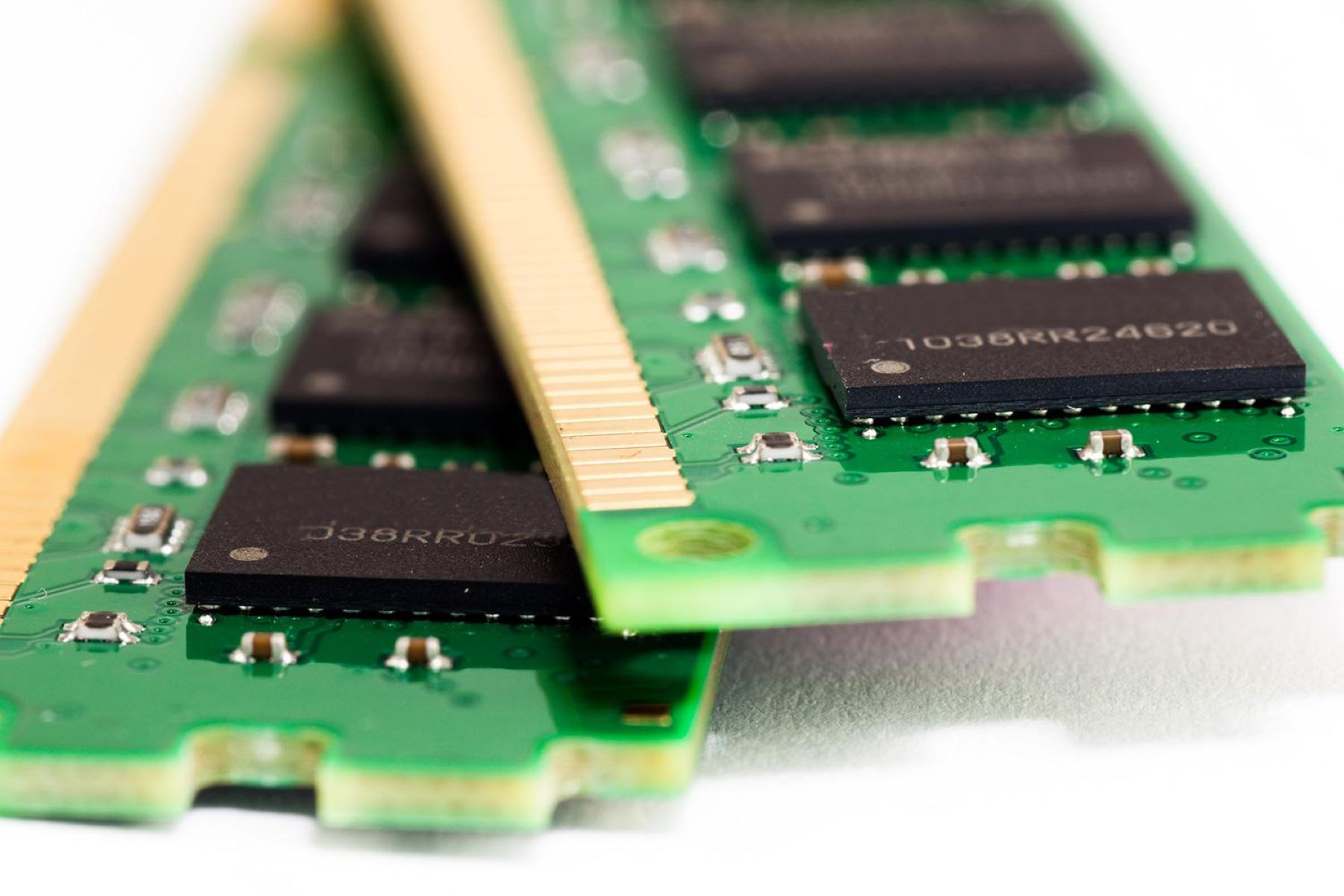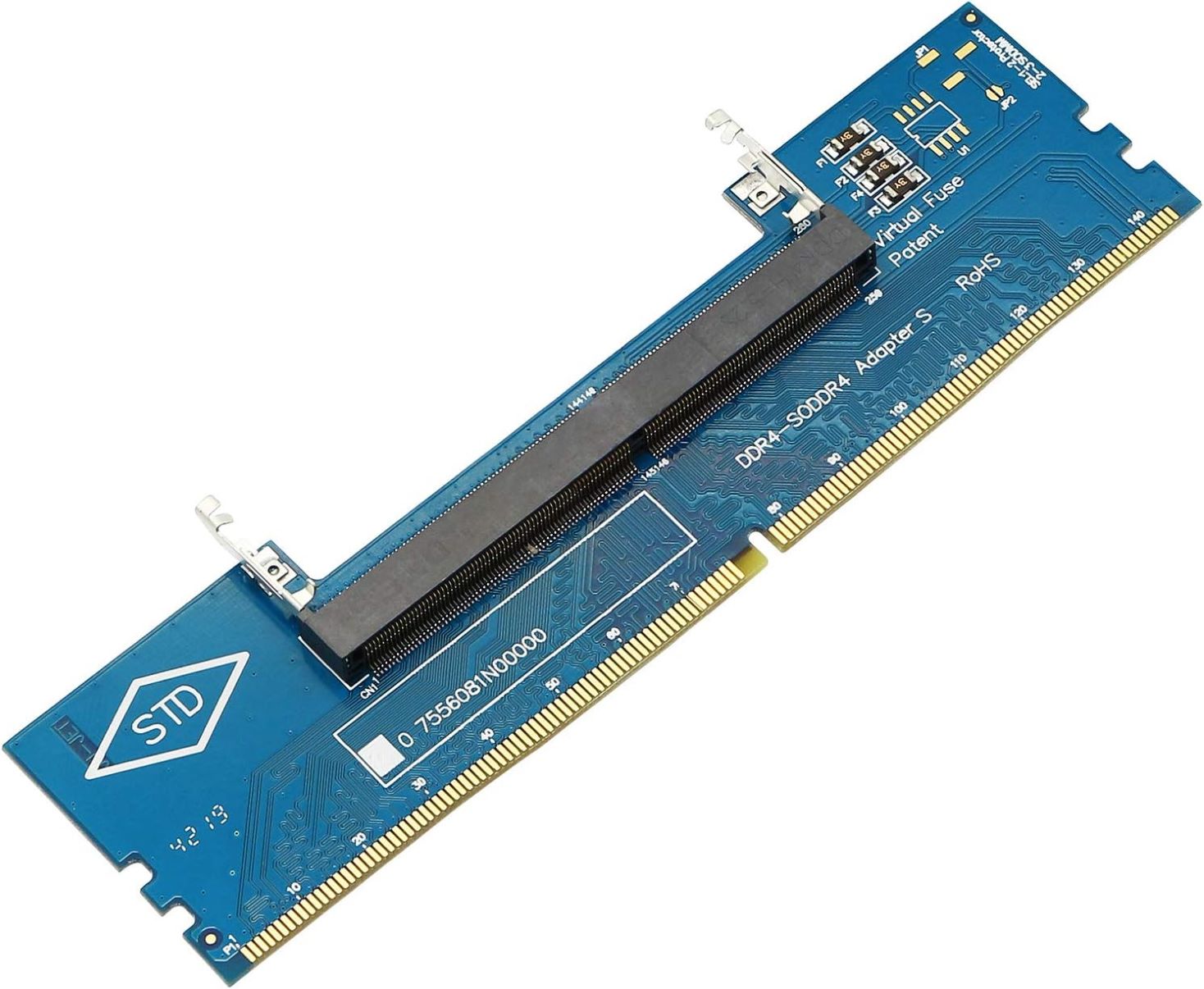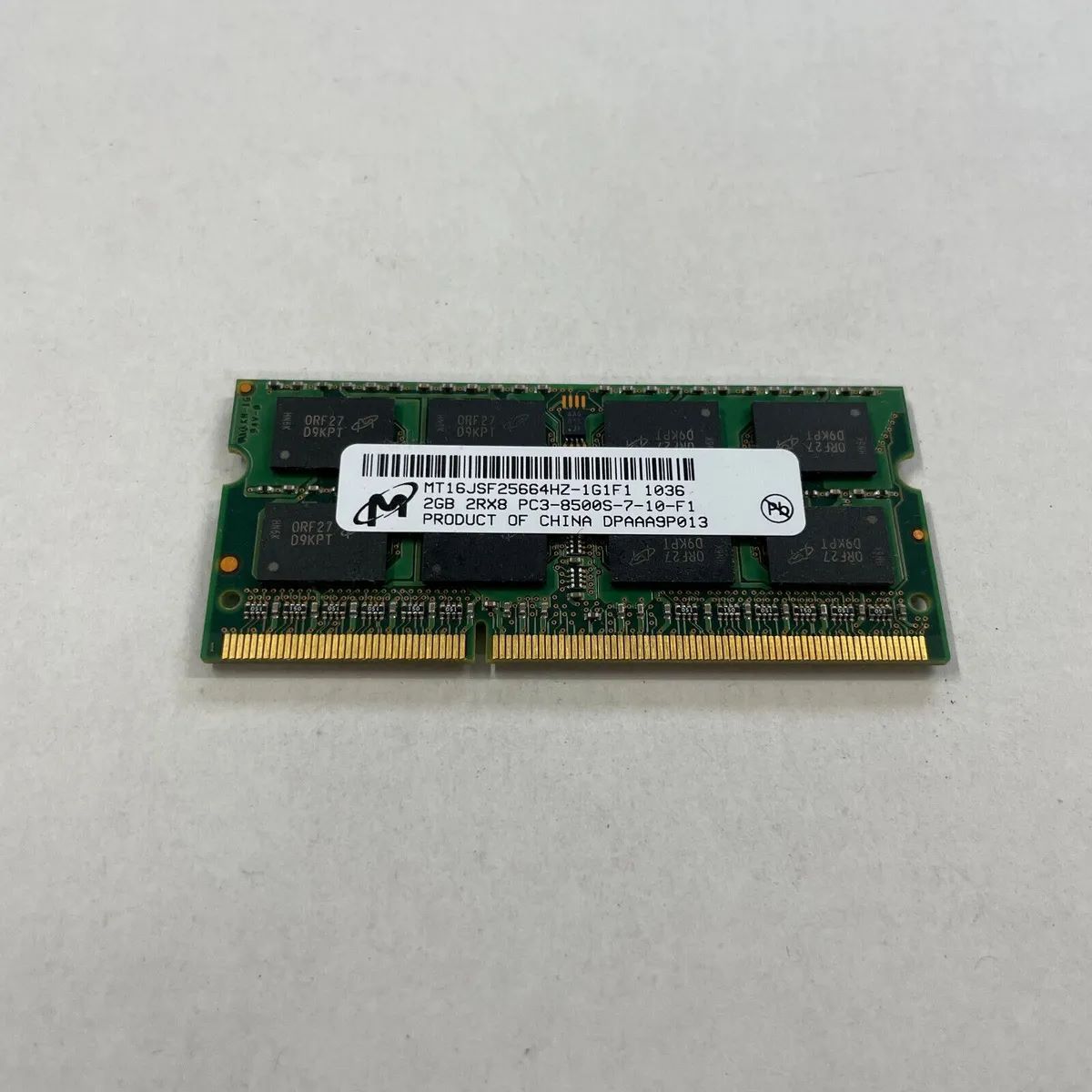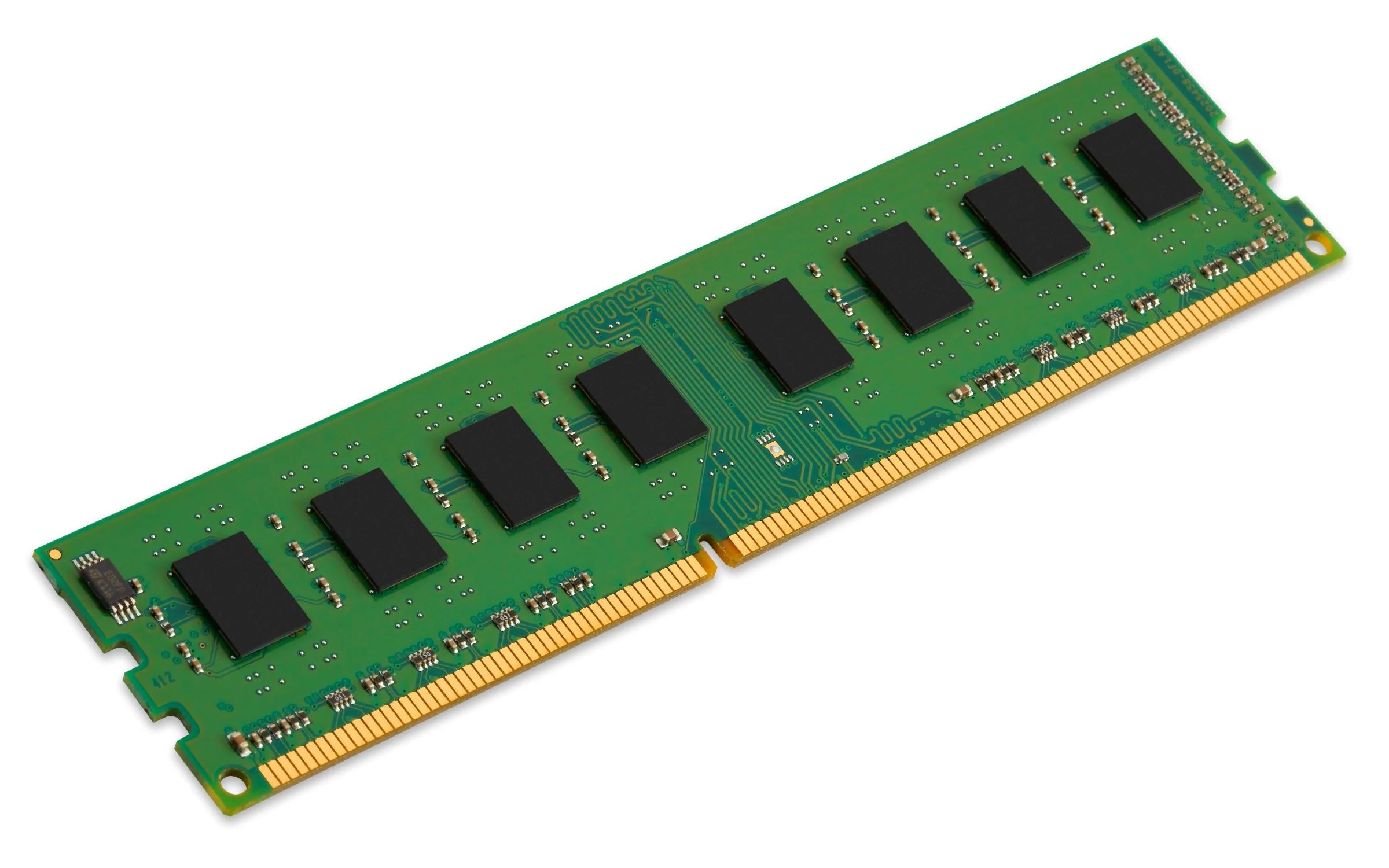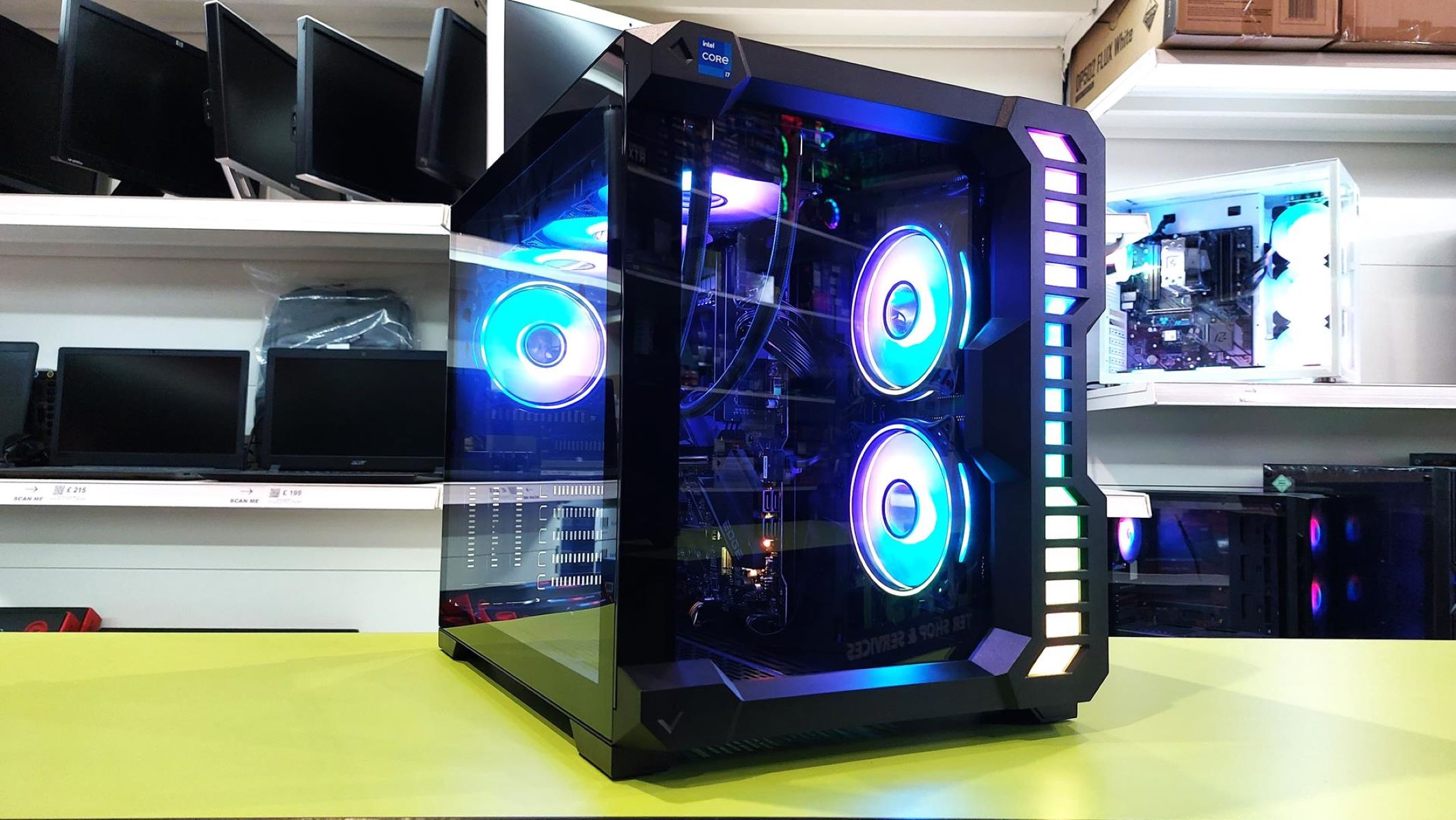Introduction
When it comes to building or upgrading a computer, understanding the different specifications and components can be overwhelming. One crucial component that greatly affects the overall performance of your system is Random Access Memory (RAM). RAM determines how fast your computer can access and process data, making it an essential consideration.
One aspect of RAM that often confuses people is the term “MHz.” If you’ve wondered what MHz means in relation to RAM, you’re in the right place. In this article, we’ll delve into the significance of MHz for RAM and its impact on your computer’s speed and performance.
MHz stands for megahertz, which represents the frequency at which your RAM operates. It measures the number of cycles per second that your RAM can complete. The higher the MHz, the faster your RAM can process data.
RAM speed plays a crucial role in determining the overall speed of your computer. When you open applications, browse the internet, or perform any task on your computer, the RAM rapidly retrieves and stores data to be used by the processor. The faster your RAM can access and transfer data, the smoother and faster your computer will perform.
Choosing the right MHz for your RAM depends on several factors. One essential consideration is your computer’s motherboard compatibility. Each motherboard has a specific supported RAM MHz range, so it’s important to check the specifications of your motherboard before purchasing RAM.
Another factor to consider is the intended use of your computer. If you primarily use your computer for basic tasks like web browsing and document editing, lower MHz options may suffice. However, if you are a gamer, video editor, or frequently work with resource-intensive applications, higher MHz RAM can provide a significant performance boost.
To get a basic understanding of RAM timings, let’s take a look at two common values: CAS latency (CL) and RAS to CAS delay (tRCD). CAS latency measures the time it takes for the RAM to respond to a read command, while RAS to CAS delay measures the time it takes to access the data stored in the RAM module. These timings, along with the MHz, collectively determine the overall performance of your RAM.
With advancements in technology, RAM options are available in various MHz ranges, ranging from 2133 MHz to over 4000 MHz. It’s important to note that higher MHz RAM is typically more expensive, so you’ll need to consider your budget when making a decision.
Now that you understand the significance of MHz for RAM and the factors to consider when choosing the right MHz, you may be wondering how much MHz you actually need. In the next section, we’ll explore this topic in more detail to help you make an informed decision.
What Does MHz Mean?
If you’ve ever shopped for RAM, you’ve likely come across the term “MHz.” But what exactly does it mean? MHz stands for megahertz, which is a unit of frequency that measures the number of cycles per second. In the context of RAM, MHz represents the speed at which your RAM operates.
When the MHz value of your RAM is higher, it means that your RAM can complete more cycles per second, resulting in faster data processing. This speed directly impacts how quickly your computer can access and retrieve data from the RAM module.
Imagine your computer’s RAM as a storage area filled with different data that your processor needs to access. The higher the MHz of your RAM, the faster your computer can retrieve the necessary data and send it to the processor for execution. This translates to improved performance and responsiveness, especially when running memory-intensive tasks or applications.
It’s important to note that the MHz value of your RAM should be compatible with your computer’s motherboard. Each motherboard has a specific supported MHz range, and using RAM with a higher MHz than what your motherboard supports may result in the RAM running at a lower speed. Conversely, using RAM with a lower MHz than what your motherboard supports may limit the overall performance potential of your system.
Additionally, MHz is not the only factor that affects the performance of your RAM. RAM timings, also known as latency, play a crucial role in determining how quickly the data can be accessed and sent to the processor. The most important timing value is CAS latency (CL), which measures the time it takes for the RAM to respond to a read command. Other timing values, such as RAS to CAS delay (tRCD) and RAS precharge time (tRP), also contribute to the overall performance of your RAM.
In summary, the MHz value of your RAM represents the speed at which your RAM operates and directly affects the performance of your computer. Higher MHz RAM can result in improved data processing and smoother multitasking, while lower MHz RAM may be sufficient for basic computing needs. However, it’s crucial to ensure compatibility between your RAM’s MHz and your motherboard’s supported range for optimal performance. Now that we understand what MHz means for RAM, let’s explore how RAM speed impacts overall system performance in the next section.
RAM Speed and Performance
The speed of your computer’s RAM plays a crucial role in determining overall system performance. RAM speed refers to the MHz value of your RAM, which represents how fast your RAM can access and transfer data.
When it comes to everyday computing tasks like web browsing, word processing, and email, the impact of RAM speed might not be immediately noticeable. However, as you start running memory-intensive applications or multitasking, the importance of RAM speed becomes more apparent.
A higher MHz value allows your RAM to quickly retrieve and transfer data to the processor, resulting in faster execution of tasks. This means that applications will load quicker, and you’ll experience smoother performance with reduced lag or delay. Tasks like video editing, gaming, or running virtual machines can benefit significantly from higher RAM speeds.
In addition to opening and running applications, RAM speed also affects multitasking capability. If you frequently work with numerous open programs or browser tabs, higher RAM speeds can help maintain smooth performance even with heavy multitasking.
RAM speed is particularly crucial for gaming enthusiasts. In gaming, the speed and responsiveness of your RAM contribute to overall gaming performance. Games with large open worlds or high-end graphics can benefit from faster RAM speeds, as it allows for smoother gameplay, reduces frame drops, and enhances overall gaming experience.
While RAM speed has a significant impact on performance, it’s important to note that it’s not the sole factor determining system speed. Other components, such as the processor (CPU) and storage (SSD/HDD), also play crucial roles. A well-balanced system with a powerful CPU and fast storage combined with high-speed RAM can provide optimum performance and responsiveness.
It’s worth mentioning that RAM speed alone might not always translate into dramatic performance improvements. The benefits of higher RAM speeds are often more noticeable in specific scenarios, such as memory-intensive tasks or demanding applications. For everyday computing tasks, where memory requirements are lower, the impact of RAM speed might be less noticeable.
Lastly, the amount of RAM you have also matters. While increasing RAM speed can enhance performance, having an insufficient amount of RAM can still result in bottlenecks and sluggish performance. It’s important to consider both RAM speed and capacity when building or upgrading your system.
In summary, the speed of your RAM directly affects overall system performance, especially when dealing with memory-intensive tasks or applications. Higher RAM speeds can result in faster data processing, smoother multitasking, and improved gaming performance. However, it’s crucial to consider other components of your system to achieve a well-balanced setup and maximize overall performance.
Factors to Consider When Choosing MHz for RAM
When selecting the MHz for your RAM, several factors should be taken into consideration to ensure optimal performance and compatibility with your system. Here are some key factors to keep in mind:
- Motherboard Compatibility: The most crucial factor is ensuring that your motherboard supports the specified MHz range for the RAM you plan to purchase. Each motherboard has a supported range, and using RAM with a higher or lower MHz than what is supported may result in reduced performance or incompatibility.
- Intended Use: Consider how you plan to use your computer. If you mainly use it for basic tasks like web browsing, email, and document editing, RAM with lower MHz may suffice. However, if you are a gamer, video editor, or work with memory-intensive applications, opting for higher MHz RAM can provide a significant performance boost.
- Budget: RAM with higher MHz often comes at a higher price. It’s important to consider your budget and prioritize the MHz that aligns with your needs and financial limitations. Keep in mind that while higher MHz RAM may offer enhanced performance, the difference might not be noticeable in everyday computing tasks.
- Future Upgradability: Consider your future plans for upgrading your system. If you intend to upgrade other components in the future, such as the processor or graphics card, which may increase the demands on RAM, opting for higher MHz RAM now might be a wise choice to future-proof your system.
- Overclocking Capability: Some RAM modules are designed with overclocking capabilities, allowing you to increase the MHz beyond the standard specifications. If you have plans to overclock your RAM, ensure that you choose RAM specifically designed for overclocking and check for compatibility with your motherboard and other components.
It’s important to note that the MHz value is not the only factor that affects the performance of your RAM. RAM timings, as mentioned earlier, also play a significant role. The combination of MHz and timings determines the overall performance of your RAM. Ideally, you should aim for a balance between MHz and timings to achieve optimal performance.
Ultimately, choosing the right MHz for your RAM depends on your specific needs, budget, and compatibility with your system. Consulting the specifications of your motherboard and researching the recommended MHz range can help you make an informed decision. Remember to consider other factors like future upgradability and overclocking capability, as they can impact your choice of RAM MHz.
With these factors in mind, you can select the optimal MHz for your RAM, ensuring that your system performs at its best and meets your specific requirements.
Different MHz Options for RAM
RAM is available in a variety of MHz options, ranging from standard speeds to high-performance options. Understanding the different MHz options can help you make an informed decision when choosing RAM for your system. Here are some common MHz options for RAM:
- 2133-2400 MHz: This is typically considered the standard speed range for DDR4 RAM. It offers decent performance for everyday computing tasks like web browsing, document editing, and average gaming.
- 2666-3200 MHz: RAM in this range is a popular choice for gaming enthusiasts and those who require faster performance. It provides a noticeable improvement in overall system performance, especially when running memory-intensive applications or multitasking.
- 3600-4000+ MHz: This range is considered high-performance RAM, providing excellent performance for demanding tasks such as video editing, 3D rendering, and professional-grade gaming. RAM in this range is typically more expensive but offers faster data processing and enhanced system responsiveness.
It’s important to note that the MHz options available to you may vary depending on your motherboard compatibility. Some motherboards may only support certain MHz ranges, so it’s crucial to check the specifications before making a purchase.
When choosing between different MHz options, it’s important to consider your specific needs and budget. If you primarily use your computer for basic tasks, a lower MHz option may be sufficient to meet your requirements. However, if you engage in resource-intensive activities like gaming, video editing, or virtualization, opting for higher MHz RAM can provide a significant performance boost.
It’s worth mentioning that while higher MHz RAM offers increased performance, the actual improvement you experience will depend on various factors, including the applications you use, the other components in your system, and the specific tasks you perform. In some cases, the performance difference between different MHz options may not be noticeable for everyday computing tasks.
Regardless of the MHz option you choose, it’s important to ensure that it is compatible with your motherboard and other components. Checking the compatibility guidelines and specifications provided by the manufacturer is crucial to avoid any compatibility issues.
In summary, RAM is available in various MHz options, each offering different levels of performance. The choice of MHz depends on your specific needs, budget, and compatibility with your system. Lower MHz options are suitable for basic computing tasks, while higher MHz options provide enhanced performance for memory-intensive applications. Ensure that your chosen MHz option is compatible with your motherboard to maximize performance and stability.
Understanding RAM Timings
RAM timings, also referred to as latency, play a crucial role in determining the performance and responsiveness of your RAM. Understanding these timings can help you make informed decisions when choosing RAM for your system.
The primary timing value to consider is CAS latency (CL), which represents the delay between the RAM receiving a command and being able to deliver the requested data. A lower CL value signifies faster response time and better performance. For example, RAM with a CL of 14 will generally perform better in terms of latency than RAM with a CL of 16.
In addition to CAS latency, there are other timing values to consider, including RAS to CAS delay (tRCD) and RAS precharge time (tRP). These timings measure the time it takes to access the data stored in the RAM module and the time it takes to prepare for the next memory access, respectively.
It’s important to note that these timings are represented in clock cycles, rather than standardized units like milliseconds. They are typically expressed as a set of three numbers, such as 14-16-16-36, where each number represents the respective timing value.
While lower timing values generally indicate better performance, it’s crucial to strike a balance between timing values and MHz. RAM with higher MHz may compensate for slightly higher timing values, resulting in comparable or better performance compared to RAM with lower MHz and tighter timings.
When selecting RAM, you may come across the term “XMP” or “Extreme Memory Profile.” XMP is a feature that allows the RAM to automatically set optimized timings and frequency values in the system’s BIOS. This feature can be beneficial for users who want to maximize the performance of their RAM but are not comfortable manually adjusting the timings and frequency settings.
Ultimately, the choice of RAM timings depends on your specific needs and priorities. If you engage in tasks that require lower latency, such as gaming or video editing, investing in RAM with lower timing values can provide improved performance. However, for general computing tasks, the difference in performance may not be as noticeable, and you can prioritize other factors like capacity and price.
It’s also worth mentioning that RAM timings may have an impact when overclocking the RAM. Adjusting the timings along with the frequency can help achieve stable overclocking results and maximize performance. However, overclocking should be done with caution and within the manufacturer’s recommended limits to ensure the stability of your system.
In summary, RAM timings, including CAS latency, tRCD, and tRP, have a significant impact on the performance and responsiveness of your RAM. Lower timing values generally indicate better performance but should be balanced with MHz. Understanding and considering these timings can help you select RAM that aligns with your specific needs, whether it’s for gaming, content creation, or general computing.
How Much MHz Do You Need?
Determining the optimal MHz for your RAM depends on several factors, including your specific needs and the intended use of your computer. While higher MHz RAM can offer better performance, it’s important to consider whether the performance gain justifies the cost. Here are some considerations to help you determine how much MHz you need:
Basic Computing: If you primarily use your computer for basic tasks like web browsing, email, and word processing, RAM with lower MHz options, such as 2133 or 2400 MHz, may be sufficient. These lower MHz options can meet the demands of everyday computing tasks without incurring unnecessary costs.
Gaming: For gaming enthusiasts, RAM speed can have a noticeable impact on performance, especially in games that require quick data processing and smooth gameplay. Opting for RAM with higher MHz, such as 2666 or 3200 MHz, can provide improved performance and responsiveness, reducing lag and delivering a better gaming experience.
Content Creation and Multitasking: If you engage in content creation tasks like video editing, graphic design, or 3D rendering, or if you frequently run memory-intensive applications, higher MHz RAM can greatly enhance your productivity. RAM options in the 3600 to 4000+ MHz range can handle these demanding tasks more efficiently, enabling faster data transfer and smoother multitasking.
Overclocking: If you plan to overclock your RAM for maximum performance, it’s essential to choose RAM with higher MHz options that have been specifically designed for overclocking. Overclocking allows you to push the RAM MHz beyond the specified limits to achieve even better performance. However, it’s important to note that not all RAM modules are built for overclocking, so choose accordingly.
Future Upgradability: Consider your future plans for upgrading your system. If you anticipate upgrading other components such as the processor or graphics card, which may require higher RAM speeds, choosing RAM with higher MHz options now can help future-proof your system and ensure compatibility with upcoming upgrades.
Budget: The cost is an important consideration when deciding on the MHz of your RAM. Higher MHz RAM typically comes at a higher price. If your needs and budget align with lower MHz options, you may find that the performance difference between lower and higher MHz RAM is not significant enough to justify the additional cost.
It’s worth noting that MHz is not the sole determinant of RAM performance. Other factors, such as capacity, RAM timings, and the overall system configuration, also influence system performance. A well-balanced system with adequate RAM capacity and optimized timings can deliver a satisfactory computing experience, even with lower MHz options.
Ultimately, the MHz you need for your RAM depends on your specific requirements, budget, and compatibility with your system. Consider the intended use of your computer, the demands of your tasks, and any future upgrade plans to make an informed decision that strikes a balance between performance and cost.
Overclocking Your RAM MHz
Overclocking is a technique that allows you to increase the MHz of your RAM beyond the manufacturer’s specified limits. By doing so, you can potentially achieve improved performance and faster data processing. However, it’s important to note that not all RAM modules are designed for overclocking, and caution should be exercised when attempting to overclock your RAM. Here are some considerations when overclocking your RAM MHz:
Compatibility: Ensure that your motherboard and other components support overclocking before attempting to increase the MHz of your RAM. Not all motherboards are capable of handling higher frequencies, and attempting to overclock in an incompatible system may result in instability or system failure.
RAM Quality: High-quality RAM modules offer better potential for successful overclocking. Look for RAM modules with good heat dissipation capabilities and reliable performance. Opting for RAM that is specifically designed for overclocking can increase your chances of achieving stable overclocking results.
Bios Settings: Overclocking your RAM requires accessing and modifying your system’s BIOS settings. Each motherboard manufacturer has a different BIOS interface, but typically, the RAM frequency and timings can be adjusted in the BIOS. It’s important to refer to your motherboard manual or consult manufacturer documentation for specific instructions on how to access and modify BIOS settings.
Gradual Increases: When overclocking, it’s recommended to start with small and gradual increases in MHz, rather than making significant jumps all at once. This approach allows you to test for stability and monitor any potential issues that may arise. Incrementally increase the MHz, test for stability, and make adjustments as necessary until you find a stable and optimal RAM frequency.
Stability Testing: Once you’ve overclocked your RAM, it’s crucial to conduct stability testing to ensure that your system can handle the increased frequency without crashing or experiencing errors. Various software programs, such as Prime95 or MemTest86, can help stress test your system and identify any instabilities. It’s recommended to run stability tests for an extended period to ensure the reliability of your overclocked RAM.
Heat Management: Overclocking can generate additional heat, so it’s important to ensure proper heat management. Increase in MHz can lead to increased power consumption and heat generation by your RAM modules. Ensure that your system has proper cooling with adequate airflow and consider using additional cooling solutions like RAM heatsinks or fans if necessary.
Warranty and Risk: It’s important to note that overclocking your RAM may void any warranties provided by the manufacturer. Overclocking also carries inherent risks, such as system instability, reduced lifespan of components, or potential damage to your system. Understanding these risks is important before attempting any overclocking activities.
Overclocking your RAM MHz can result in improved performance and faster data processing. However, it requires careful consideration of compatibility, gradual increases, stability testing, and proper heat management. It’s important to thoroughly research and understand the process before attempting to overclock your RAM. Adhering to manufacturer recommendations and seeking assistance from experienced users or professionals can help minimize the risks and maximize the benefits of overclocking your RAM.
Conclusion
Understanding the significance of MHz for RAM is essential when it comes to optimizing the performance of your computer. RAM speed directly impacts how quickly your system can access and process data, making it an important consideration when building or upgrading your computer.
When choosing the MHz for your RAM, several factors should be taken into account. Consider your motherboard compatibility, the intended use of your computer, your budget, and any plans for future upgrades. Striking a balance between MHz and other specifications like capacity and RAM timings is crucial for achieving optimal performance.
The MHz options for RAM vary from standard speeds to high-performance options. Lower MHz options, like 2133-2400 MHz, are suitable for basic computing tasks, while higher MHz options, ranging from 2666-3200 MHz or even 3600-4000+ MHz, offer enhanced performance for memory-intensive tasks and resource-demanding applications.
RAM timings, including CAS latency and other values like tRCD and tRP, also play a role in RAM performance. Lower timing values generally indicate better performance, but achieving a balance between timings and MHz is important. Consider your specific needs and priorities when selecting RAM with appropriate timings.
Overclocking your RAM MHz can potentially offer increased performance, but it requires careful consideration, compatibility, and proper heat management. Overclocking carries risks and may void warranties, so proceed with caution and seek guidance if needed.
In summary, selecting the right MHz for your RAM involves considering factors such as compatibility, intended use, budget, and future upgradability. By choosing the optimal MHz and balancing it with other specifications like timings, you can ensure that your RAM operates at its best and contributes to the overall performance of your computer system.







